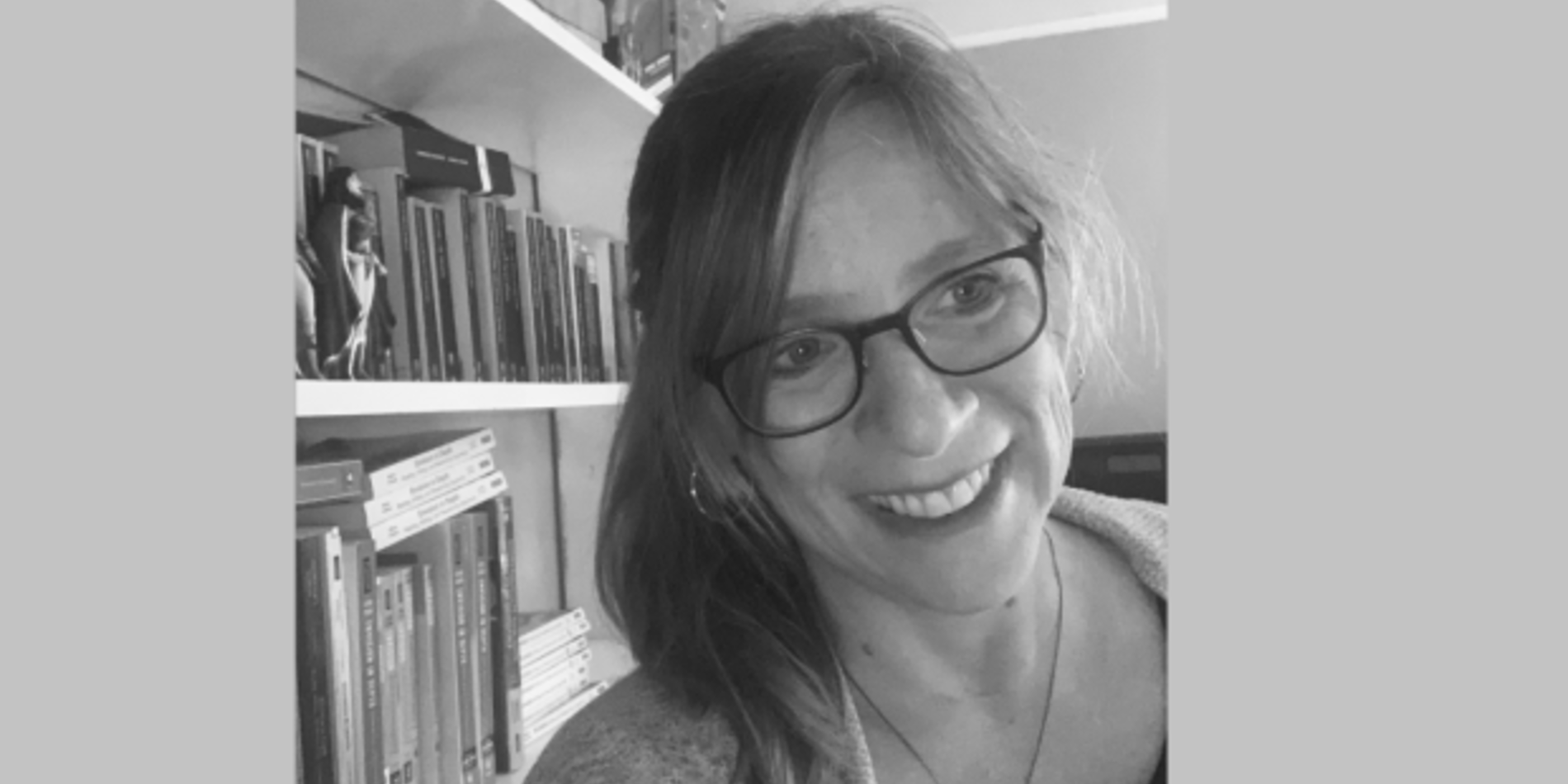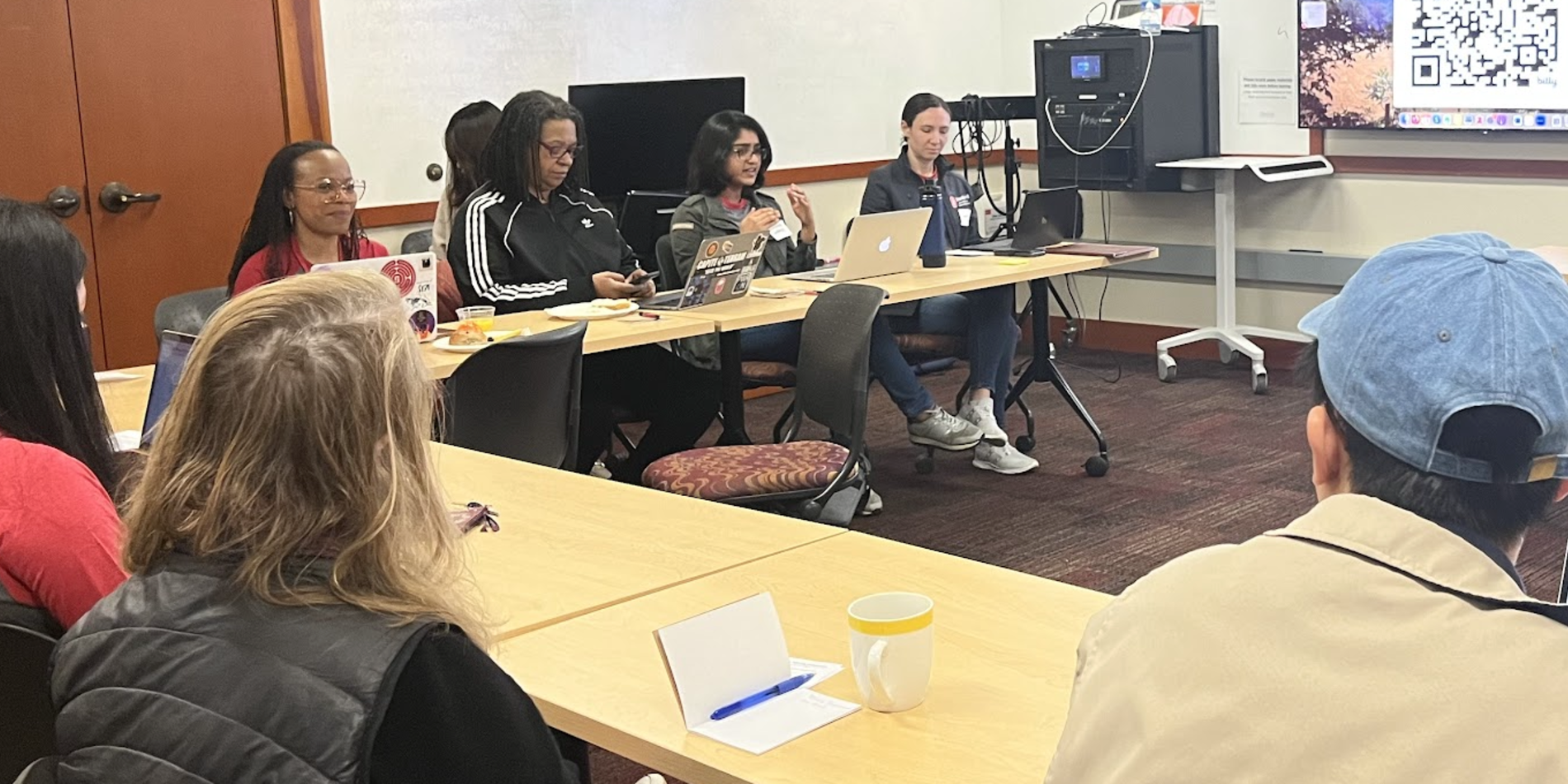Each summer, some PWR instructors spend the first 8-10 weeks from June to mid-August teaching during Summer Session. Over the past few months, several of our instructors -- Erik Ellis, Arturo Heredia, Shannon Hervey, John Peterson, and Cassie Wright -- rolled right from their spring grading back into the classroom to engage with an enthusiastic set of summer students. Below are some of their reflections on that teaching experience.
Shannon Hervey taught PWR 1D: Writing About Popular Culture - Rhetoric in American Media. Her class was part of Stanford High School Summer College. Here's what Shannon had to say about her experience:
I spent eight weeks this summer with six of the most thoughtful and engaging high school students in PWR 1D, “Writing about Popular Culture: Rhetoric in American Media.” We began our time together by watching the introductory moments of television shows about American families, namely The Brady Bunch, The Wonder Years, Modern Family, Blackish, and Fresh Off the Boat, all featuring some mention of “The American Dream” early on in their pilot episodes. These students came to Stanford from all over; I had students from New York, Texas, Ohio, and Afghanistan. Because students were so far from home, we became tightknit quickly and spent more time than I think usual hanging back after class chatting about class projects (which often felt like nerding out about interesting shows like Black Mirror, Mad Men, or The Handmaid’s Tale).
Students in this class wrote two rhetorical analyses, one collaboratively and one independently. Assigning a collaborative writing assignment is something I’ve always wanted to do and this class worked so well together right out of the gate that I thought it a good opportunity to try it out. Students worked in groups of three to rhetorically analyze an episode of an assigned show and then they worked in google docs to compose their ideas and then to organize them. This worked well and I plan to do it again in the Fall with PWR 1 students. These ambitious high school students then wrote short research proposals, orally delivered their research proposals, and then began working on their “RBA,” which was an adapted version of the PWR 1 requirement we give to Stanford Freshman, the difference being the requirement for research and the length (PWR 1D students only needed to write 7 pages, but many still ended up writing 10 – 11 page papers).
This was a special class because of the students; Their hunger and genuine curiosity coupled with the fact that many of them were away from home for the very first time made this an incredible experience for me as an instructor. I hope to work with high school students again in the future.
John Peterson taught a writing class (PWR 6VT) for Stanford's 2 to 4 Veteran Accelerator, a program designed to help veterans build skills to transition from a two-year to a four-year learning environment. Here's what John had to say about his summer teaching experience with this group of students:
I had the honor of teaching sixteen top students this summer, in PWR 6VT, “Researching and Writing About Popular Culture.” This class was required of the entire 2017 cohort of Stanford’s 2 to 4 Veteran Accelerator program, made up of veterans who either currently attend 2-year colleges or have recently transferred to 4-year programs. The 2 to 4 Program is highly competitive, accepting a small group of students after a rigorous application process. These U.S. military veterans have all served in active duty, many in Afghanistan and Iraq, and come from a broad range of backgrounds.
Students in the eight-week class developed complex rhetorical analyses of academic texts; wrote extended discussions of the core “conversations” in their researched topics; delivered live presentations on their research; and composed in-depth overviews of their research, writing 10-page analyses of perspectives of key stakeholders, researched arguments about their topics, and proposals of where this research would go next. In no particular order, students from this 2017 cohort will be attending the following institutions this fall: Columbia, Amherst, Berkeley, Boston University, Stanford, Williams, Evergreen, and the University of Texas.
Cassie Wright's summer class was PWR 1A: "Introduction to Writing at Stanford: Rhetorics of Popular Culture." The students in her class were all incoming first year student-athletes. Here are her reflections on her summer class:
This past summer I had the privilege of working for six weeks with 12 very bright incoming student-athletes on exploring the political implications of popular culture and identity in“Rhetoric and Popular Culture.” These blue-chip recruits are some of the top athletes in the nation and many come from varied academic backgrounds, eager, excited, but distracted by the foreboding arrival of their “Double Days” (the NCAA sanctioned start date for athlete training). One of the best challenges of teaching this class, then, is helping these student atheltes understand the powerful connections between practicing their sport and practicing writing and communication through what Debra Hawhee once coined the 3Rs: “rhythm, repetition, and response.”
We also played around with making pop culture time capsules, imagining pop culture in the US and abroad in both historic and present time to understand the way popular culture is socially, geographically, and temporally constructed. Students, for example, loved imagining pop culture circa “Dr. C’s time in college, because, you know, she’s old.” These playful invention activities were the springboard for finding topics for final research projects. To introduce students to primary research methods to support their research process, students played around with generating flash data sets from observing bicycles for 5 minutes, from which they then distilled and created 1 talking point that told a story about their emergent data. They also created surveys about social media and identity and wrote reflections about good and bad questioning practices in survey design. These in-class exercises prepared them to transfer the various types of primary research methods to their own research projects, which they assembled using a portfolio model that included a final reflection letter that allowed students to weave together their learning across the units.
A final highlight was when one of my students sent me an email with a photo that demonstrated how they were adapting invention activities from class to support their process writing their final paper for their psychology class. It was a small but important victory to remind me of the transferable value of the work we do in PWR for students’ communication practices across the curriculum here at Stanford.



